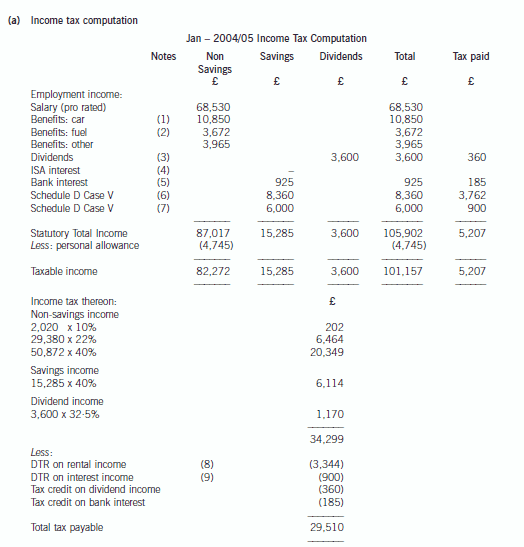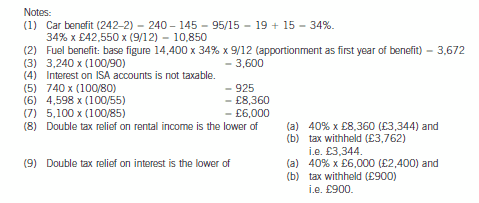2020年ACCA考试会计师与企业财经词汇汇编(4)
发布时间:2020-10-10
各位小伙伴注意了,备考已经进入了关键期,现在状态如何啊,今天51题库考试学习网为大家分享2020年ACCA考试会计师与企业财经词汇汇编(4),一起来看看吧。
ACCA财经词汇汇编:NAV per
Share
【English Terms】
NAV per Share
【中文翻译】
每股资产净值
【详情解释/例子】
1. 对于共同基金,指每股共同基金的价值,计算方法为基金净资产值总额除以已发行股票数目。
2. 对于企业估值,指净资产值除以已发行股票数目。
ACCA财经词汇汇编:Natural
Unemployment
【English Terms】
Natural Unemployment
【中文翻译】
自然失业
【详情解释/例子】
一个经济体系内的长期持续失业率。
ACCA财经词汇汇编:National
income
【English Terms】
National income
【中文翻译】
国民收入
【详情解释/例子】
国民收入(national income)是指物质生产部门劳动者在一定时期所创造的价值。从社会总产值中扣除物质消耗后的剩余部分就是国民收入,国民收入(价值形态)=社会总产值-已消耗生产资料价值或国民收入(实物形态)=社会总产品-已消耗生产资料。在使用价值上,国民收入是由体现新创造价值的生产资料和消费资料所构成。创造国民收入的物质生产部门,有农业、工业、建筑业和作为生产过程在流通过程内继续的运输业、邮电业及商业等。反映国民收入的两个主要统计数字是本地生产总值(GDP, 即国内生产总值) 及本地居民生产总值(GNP, 即国民生产总值)。
ACCA财经词汇汇编:National
accounting
【English Terms】
National accounting
【中文翻译】
国民经济核算
【详情解释/例子】
所谓国民经济,就是一国(或地区)范围内和一定历史时期中整个社会经济活动的总和。
ACCA财经词汇汇编:Nasdaq
National Market Securities
【English Terms】
Nasdaq National Market Securities
【中文翻译】
纳斯达克全国市场
【详情解释/例子】
纳斯达克全国市场包含3000 多家公司,这些公司都拥有全国性或国家性股东基础、符合严格的财务要求及认同既定的企业治理标准。
以上就是51题库考试学习网带给大家的全部内容,相信小伙伴们都了解清楚。预祝12月份ACCA考试取得满意的成绩,如果想要了解更多关于ACCA考试的资讯,敬请关注51题库考试学习网!
下面小编为大家准备了 ACCA考试 的相关考题,供大家学习参考。
2 Assume that today’s date is 1 July 2005.
Jan is aged 45 and single. He is of Danish domicile but has been working in the United Kingdom since 1 May 2004
and intends to remain in the UK for the medium to long term. Although Jan worked briefly in the UK in 1986, he
has forgotten how UK taxation works and needs some assistance before preparing his UK income tax return.
Jan’s salary from 1 May 2004 was £74,760 per annum. Jan also has a company car – a Jaguar XJ8 with a list price
of £42,550 including extras, and CO2 emissions of 242g/km. The car was available to him from 1 July 2004. Free
petrol is provided by the company. Jan has other taxable benefits amounting to £3,965.
Jan’s other 2004/05 income comprises:
£
Dividend income from UK companies (cash received) 3,240
Interest received on an ISA account 230
Interest received on a UK bank account 740
Interest remitted from an offshore account (net of 15% withholding tax) 5,100
Income remitted from a villa in Portugal (net of 45% withholding tax) 4,598
The total interest arising on the offshore account was £9,000 (gross). In addition, Jan has not remitted other
Portuguese rental income arising in the year, totalling a further £1,500 (gross).
Jan informs you that his employer is thinking of providing him with rented accommodation while he looks for a house
to buy. The accommodation would be a two bedroom flat, valued at £155,000 with an annual value of £6,000. It
would be made available from 6 August 2005. The company will pay the rent of £600 per month for the first six
months. All other bills will be paid by Jan.
Jan also informs you that he has 25,000 ordinary shares in Gilet Ltd (‘Gilet’), an unquoted UK trading company. He
has held these shares since August 1986 when he bought 2,500 shares at £4.07 per share. In January 1994, a
bonus issue gave each shareholder nine shares for each ordinary share held. In the last week all Gilet’s shareholders
have received an offer from Jumper plc (‘Jumper’) who wishes to acquire the shares. Jumper has offered the following:
– 3 shares in Jumper (currently trading at £3.55 per share) for every 5 shares in Gilet, and
– 25p cash per share
Required:
(a) Calculate Jan’s 2004/05 income tax (IT) payable. (11 marks)


(c) Acting as an external consultant to Semer, discuss the validity of the proposed strategy to increase gearing, and explain whether or not the estimates produced in (b) above are likely to be accurate. (10 marks)
(c) Report on the proposed adjustment of gearing through the repurchase of ordinary shares
The effect of capital structure on the value of a company is not fully understood.
Increasing the proportion of debt in the capital structure may reduce the overall cost of capital due to the interest on debt being a tax allowable expense. Even if a company is in a non-tax paying position, mixing additional low cost debt with relatively expensive equity might reduce the weighted average cost of capital. In such circumstances the proposed strategy to increase gearing would have some validity. However, increasing gearing can also bring problems. Risk to investors, and therefore the required returns on equity and debt, will increase as gearing increases. Very high levels of gearing might lead to
direct and indirect bankruptcy costs, with a detrimental effect on cash flow and corporate value. Any benefits from increasing the proportion of debt in the capital structure will be to some extent offset as a result of increased risk with high gearing.
The revised estimates of the effect on the cost of capital and value of Semer are not likely to be accurate. Reasons for this include:
(i) The company will not be able to repurchase the necessary shares at their current market value. Approximately £240 million value of equity would need to be repurchased, or more than one third of the existing market value of equity.
As repurchases take place it is likely that the share price will significantly increase.
(ii) The cost of debt is unlikely to remain constant. As more debt is issued lenders will demand a higher interest rate to compensate for the extra risk resulting from higher gearing levels. The cost of equity will also increase with higher gearing. These effects will increase the weighted average cost of capital to a higher level than that estimated.
(iii) The precise market values of debt and equity after the repurchase are unknown, and again will reflect the market attitude
to the new risk of the higher gearing.
The value of the company is likely to be much lower than that estimated, as the weighted average cost of capital is likely to be underestimated.
(b) You are the audit manager of Petrie Co, a private company, that retails kitchen utensils. The draft financial
statements for the year ended 31 March 2007 show revenue $42·2 million (2006 – $41·8 million), profit before
taxation of $1·8 million (2006 – $2·2 million) and total assets of $30·7 million (2006 – $23·4 million).
You are currently reviewing two matters that have been left for your attention on Petrie’s audit working paper file
for the year ended 31 March 2007:
(i) Petrie’s management board decided to revalue properties for the year ended 31 March 2007 that had
previously all been measured at depreciated cost. At the balance sheet date three properties had been
revalued by a total of $1·7 million. Another nine properties have since been revalued by $5·4 million. The
remaining three properties are expected to be revalued later in 2007. (5 marks)
Required:
Identify and comment on the implications of these two matters for your auditor’s report on the financial
statements of Petrie Co for the year ended 31 March 2007.
NOTE: The mark allocation is shown against each of the matters above.
(b) Implications for auditor’s report
(i) Selective revaluation of premises
The revaluations are clearly material to the balance sheet as $1·7 million and $5·4 million represent 5·5% and 17·6%
of total assets, respectively (and 23·1% in total). As the effects of the revaluation on line items in the financial statements
are clearly identified (e.g. revalued amount, depreciation, surplus in statement of changes in equity) the matter is not
pervasive.
The valuations of the nine properties after the year end provide additional evidence of conditions existing at the year end
and are therefore adjusting events per IAS 10 Events After the Balance Sheet Date.
Tutorial note: It is ‘now’ still less than three months after the year end so these valuations can reasonably be expected
to reflect year end values.
However, IAS 16 Property, Plant and Equipment does not permit the selective revaluation of assets thus the whole class
of premises would need to have been revalued for the year to 31 March 2007 to change the measurement basis for this
reporting period.
The revaluation exercise is incomplete. Unless the remaining three properties are revalued before the auditor’s report on
the financial statements for the year ended 31 March 2007 is signed off:
(1) the $7·1 revaluation made so far must be reversed to show all premises at depreciated cost as in previous years;
OR
(2) the auditor’s report would be qualified ‘except for’ disagreement regarding non-compliance with IAS 16.
When it is appropriate to adopt the revaluation model (e.g. next year) the change in accounting policy (from a cost model
to a revaluation model) should be accounted for in accordance with IAS 16 (i.e. as a revaluation).
Tutorial note: IAS 8 Accounting Policies, Changes in Accounting Estimates and Errors does not apply to the initial
application of a policy to revalue assets in accordance with IAS 16.
Assuming the revaluation is written back, before giving an unmodified opinion, the auditor should consider why the three
properties were not revalued. In particular if there are any indicators of impairment (e.g. physical dilapidation) there
should be sufficient evidence on the working paper file to show that the carrying amount of these properties is not
materially greater than their recoverable amount (i.e. the higher of value in use and fair value less costs to sell).
If there is insufficient evidence to confirm that the three properties are not impaired (e.g. if the auditor was prevented
from inspecting the properties) the auditor’s report would be qualified ‘except for’ on grounds of limitation on scope.
If there is evidence of material impairment but management fail to write down the carrying amount to recoverable
amount the auditor’s report would be qualified ‘except for’ disagreement regarding non-compliance with IAS 36
Impairment of Assets.
声明:本文内容由互联网用户自发贡献自行上传,本网站不拥有所有权,未作人工编辑处理,也不承担相关法律责任。如果您发现有涉嫌版权的内容,欢迎发送邮件至:contact@51tk.com 进行举报,并提供相关证据,工作人员会在5个工作日内联系你,一经查实,本站将立刻删除涉嫌侵权内容。
- 2020-01-02
- 2020-10-10
- 2021-05-29
- 2021-02-13
- 2021-05-29
- 2020-10-18
- 2019-03-09
- 2021-05-29
- 2020-08-15
- 2020-10-10
- 2021-05-29
- 2021-02-13
- 2021-05-29
- 2020-10-10
- 2020-10-10
- 2020-09-05
- 2020-09-05
- 2019-12-29
- 2020-10-21
- 2020-10-10
- 2020-10-18
- 2020-10-18
- 2020-09-05
- 2021-05-29
- 2021-05-29
- 2021-02-13
- 2020-09-05
- 2021-02-13
- 2021-05-29
- 2021-02-13